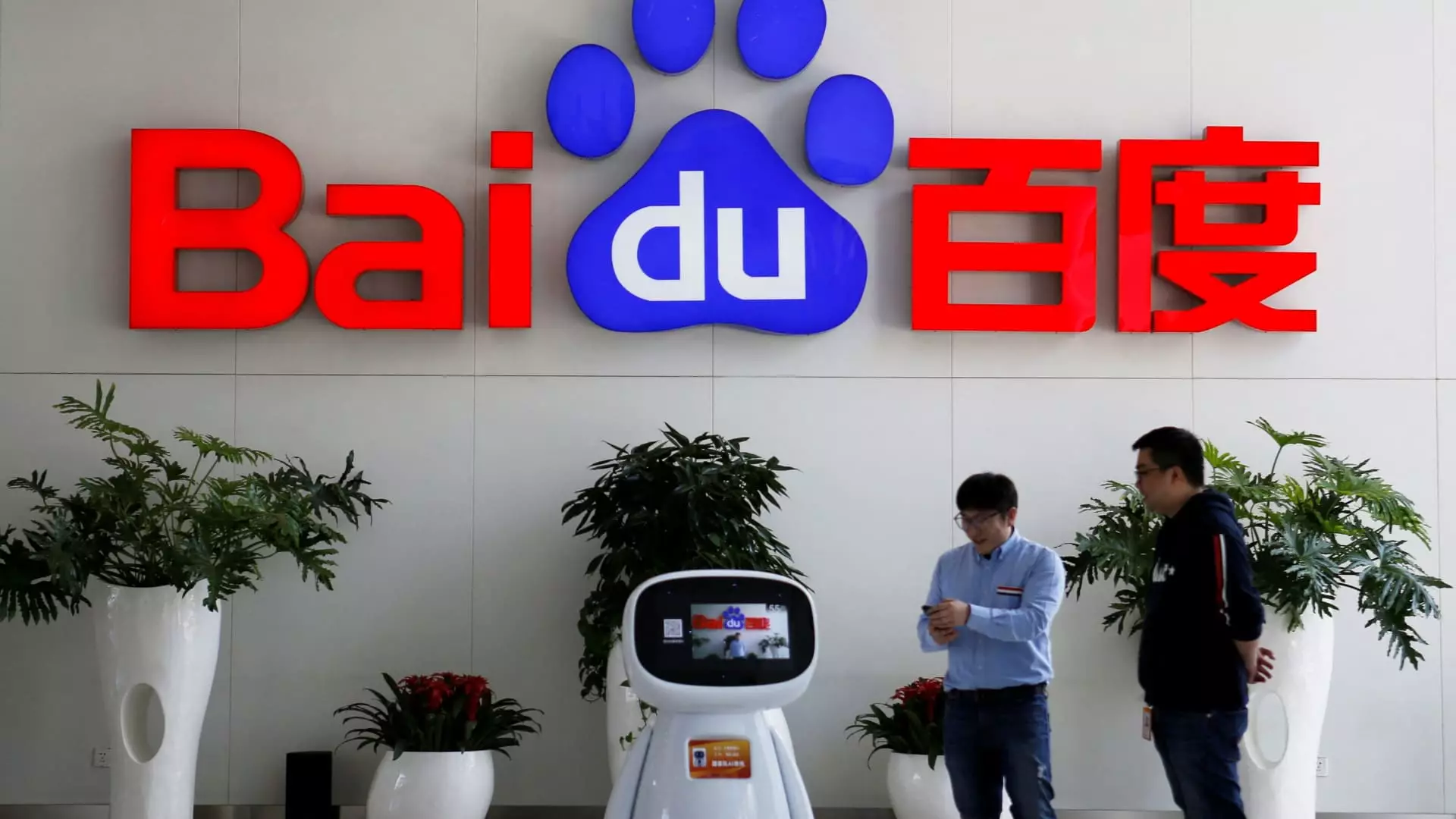Baidu, one of China’s foremost tech companies, is gearing up to release its advanced artificial intelligence (AI) model, Ernie 5.0, during the latter half of this year. As new competitors, particularly startups like DeepSeek, begin to shake up the market, Baidu recognizes the urgent need for innovation in its offerings. This move signals a pivotal moment in the industry where traditional giants must adapt rapidly to retain market relevance.
The term “foundation model” refers to a specific class of AI that excels in understanding language and generating various outputs, including text, images, and even complete narratives. Ernie 5.0 is designed to incorporate significant enhancements in its multimodal capabilities, which will enable it to seamlessly process and generate not only text and images, but also audio and video. This broader functionality could transform the way users interact with technology, making it increasingly intuitive and versatile.
The competition in the AI space is heating up, with Baidu’s endeavors coming at a time when several Chinese companies are racing to innovate. This urgency is amplified by the formidable presence of U.S. firms like OpenAI, which have set high benchmarks for AI capabilities. The launch of DeepSeek’s open-source AI model, which managed to impress users with its reasoning abilities while offering cost advantages over established products like ChatGPT, serves as a wake-up call for tech giants. This shift highlights not only the pace of innovation in AI but also the challenges that these companies face in maintaining their competitive edge.
Baidu’s CEO Robin Li recently shared insights at the World Governments Summit in Dubai regarding the potential of foundational models. He indicated that the inference costs associated with these models could decrease significantly over the next year, potentially transforming productivity across industries. The proposition that cost reductions directly correlate with productivity enhancements encapsulates the essence of innovation in this space, suggesting a future where AI becomes not just a tool but a cornerstone of business efficacy.
Baidu’s initial surge into AI with the launch of its Ernie chatbot in March 2023 positions it as a pioneer in the Chinese tech industry. However, the firm has encountered fierce competition, leading to its offerings being overshadowed by other rapidly evolving chatbots from both start-ups and established players like Alibaba and ByteDance. In stark contrast to Alibaba’s impressive stock performance, with a 33% gain this year, Baidu’s stock growth remains modest at about 6%. This disparity highlights the volatile nature of the tech market, especially in the fast-evolving AI sector, where public sentiment and investor confidence can shift rapidly.
Despite these challenges, Baidu continues to integrate generative AI into a variety of its services, which illustrates the broader application of AI technologies within its suite of products. For instance, the Wenku platform, a document and presentation creation tool powered by AI, has garnered a remarkable 40 million paying users as of late 2024.
With the release of its Generation 4 Ernie model in October 2023 and subsequent updates like Ernie 4.0, which was introduced in August 2024, Baidu is laying the groundwork for the anticipated arrival of Ernie 5.0. However, uncertainty looms as the company has not provided a definitive timeline for its next update, leaving industry watchers wondering about its potential impact.
Furthermore, OpenAI continues to push the envelope with its AI models, recently unveiling GPT-4o, while its CEO hinted at no immediate plans for GPT-5. This climate of uncertainty reinforces the notion that the AI sector is not just a race for technological supremacy; it is also a test of strategic foresight and adaptability in the face of evolving user expectations and competitive pressures.
As the AI landscape becomes increasingly crowded and competitive, Baidu’s maneuvering with Ernie 5.0 will be closely monitored by industry experts. Their ability to innovate, respond to market dynamics, and leverage cutting-edge functionalities will ultimately define their trajectory in a rapidly advancing technological era.


Leave a Reply